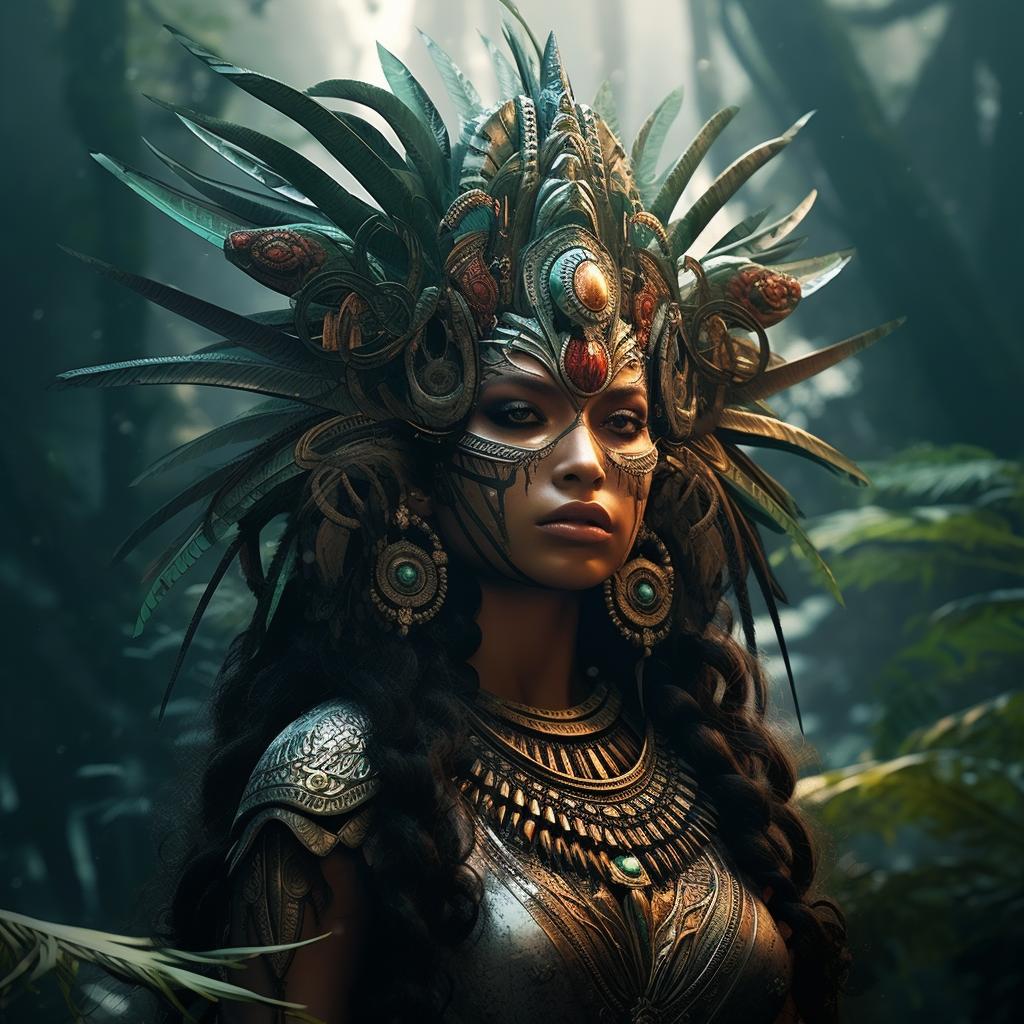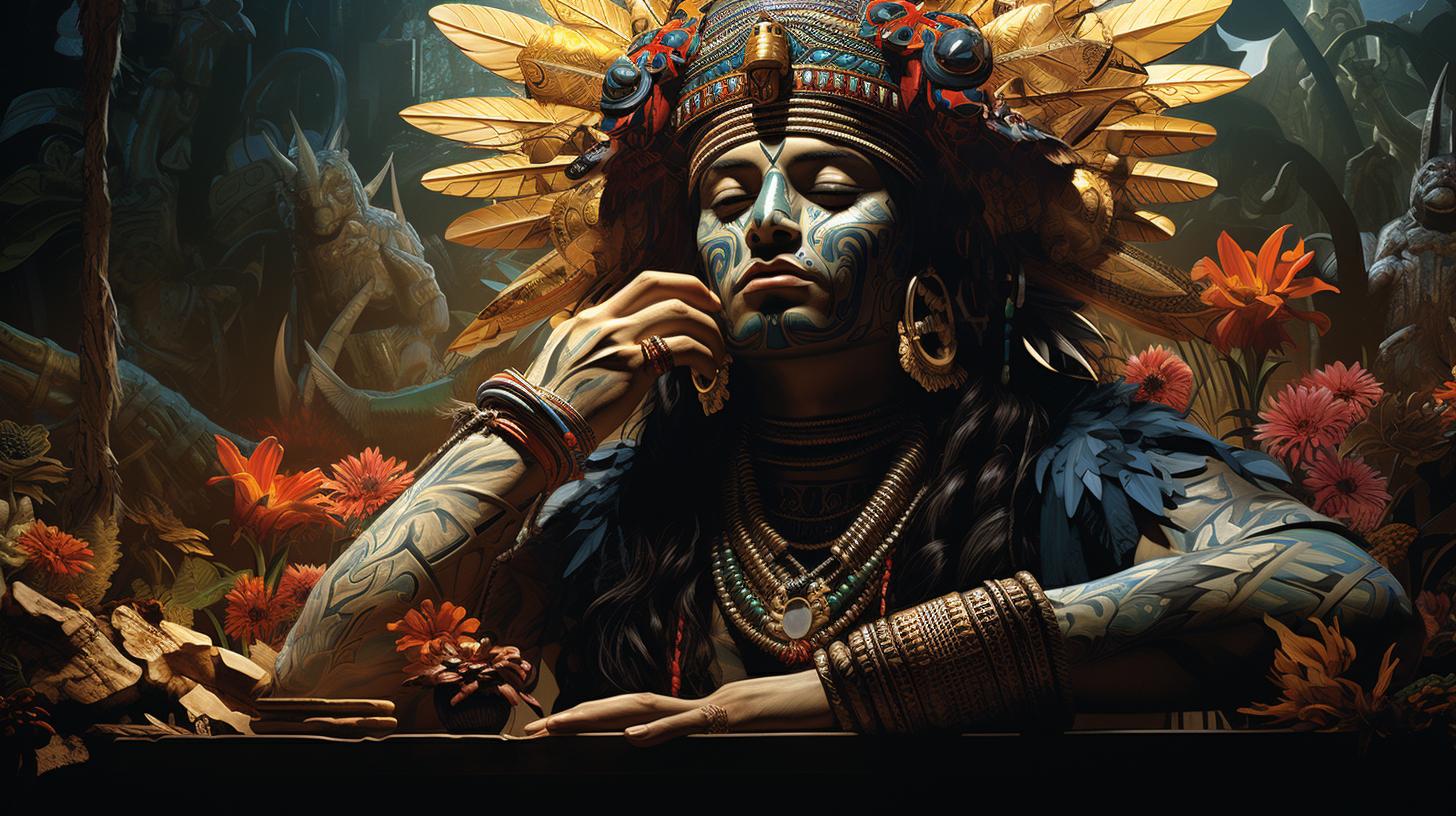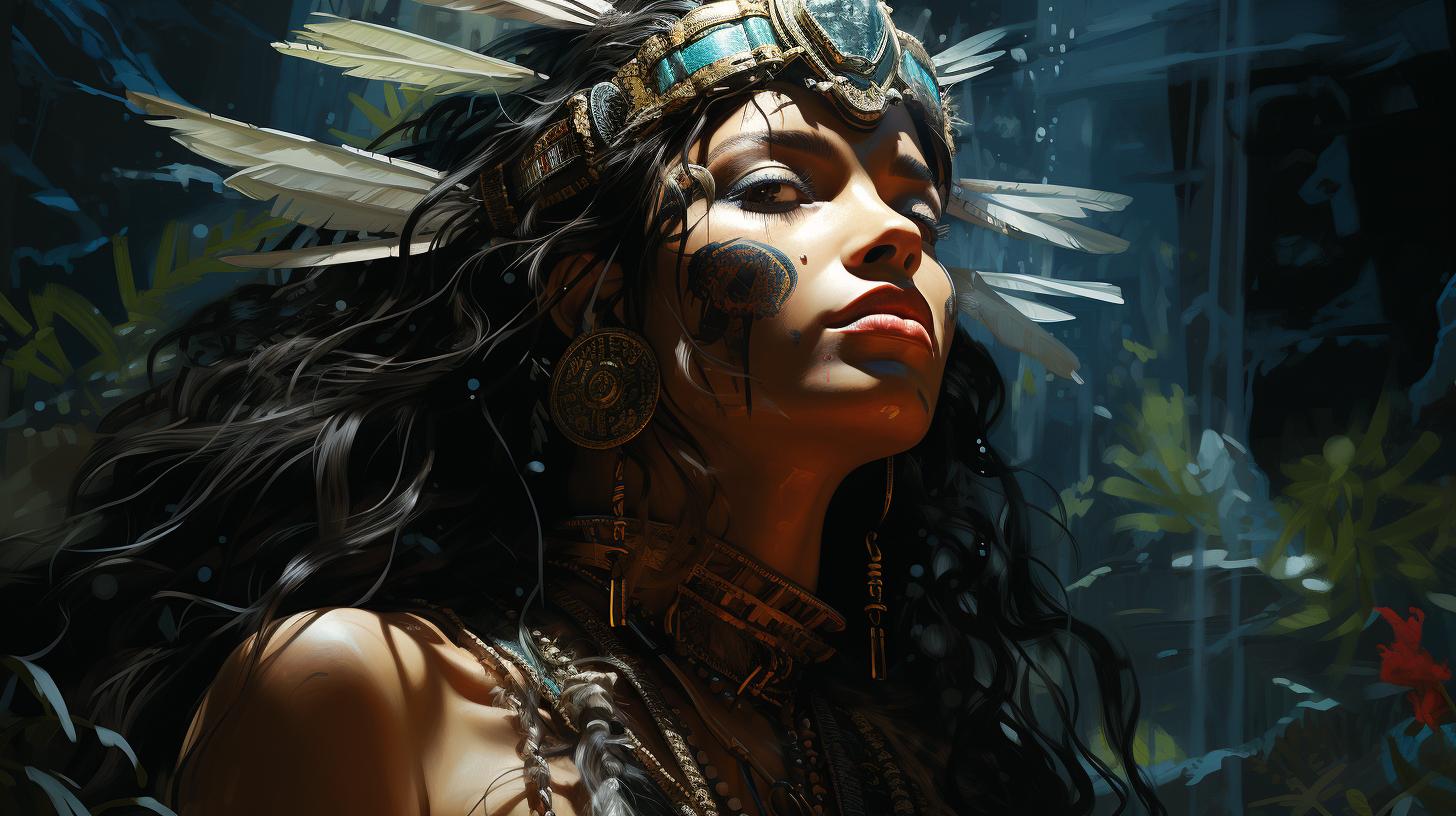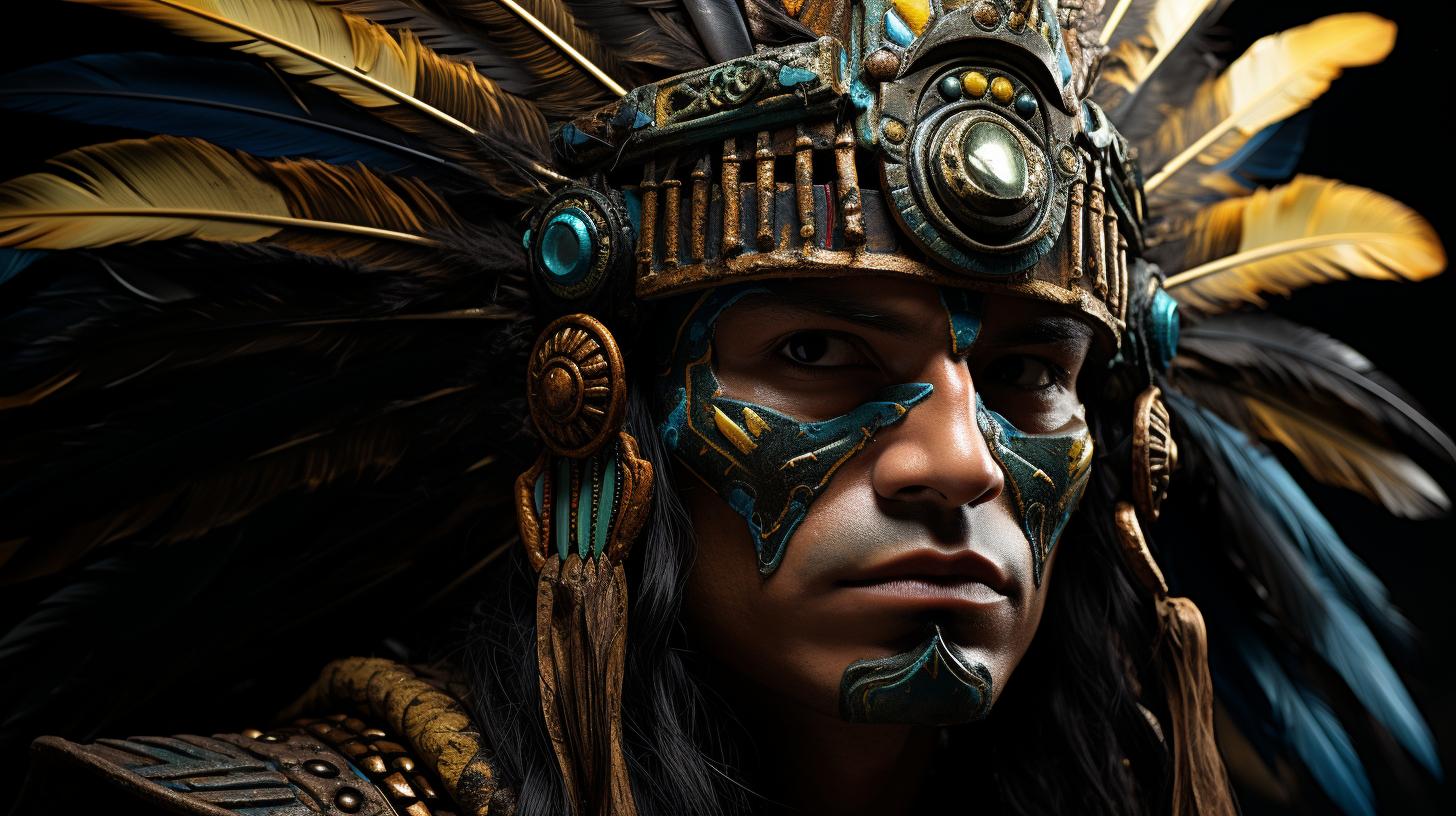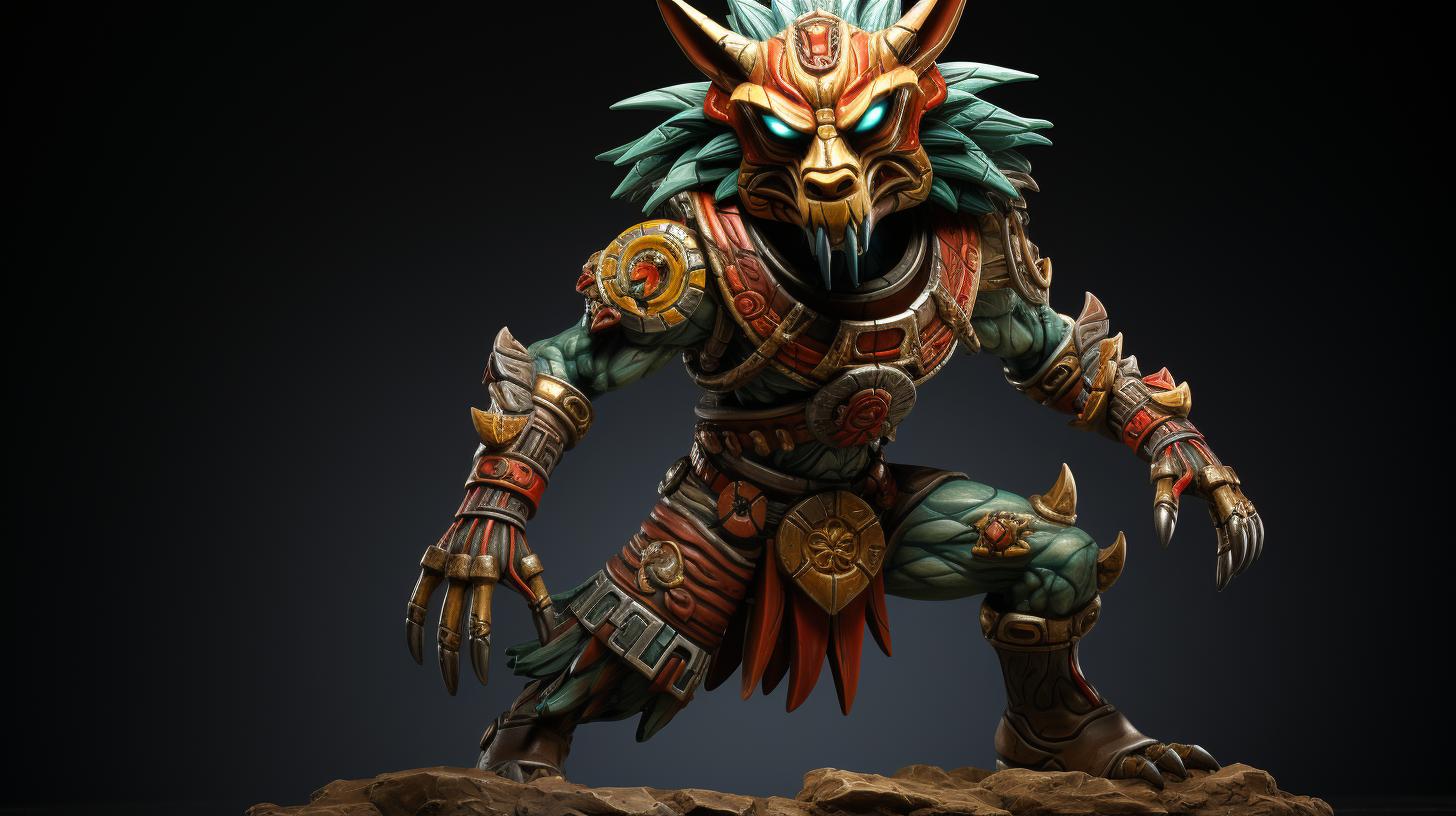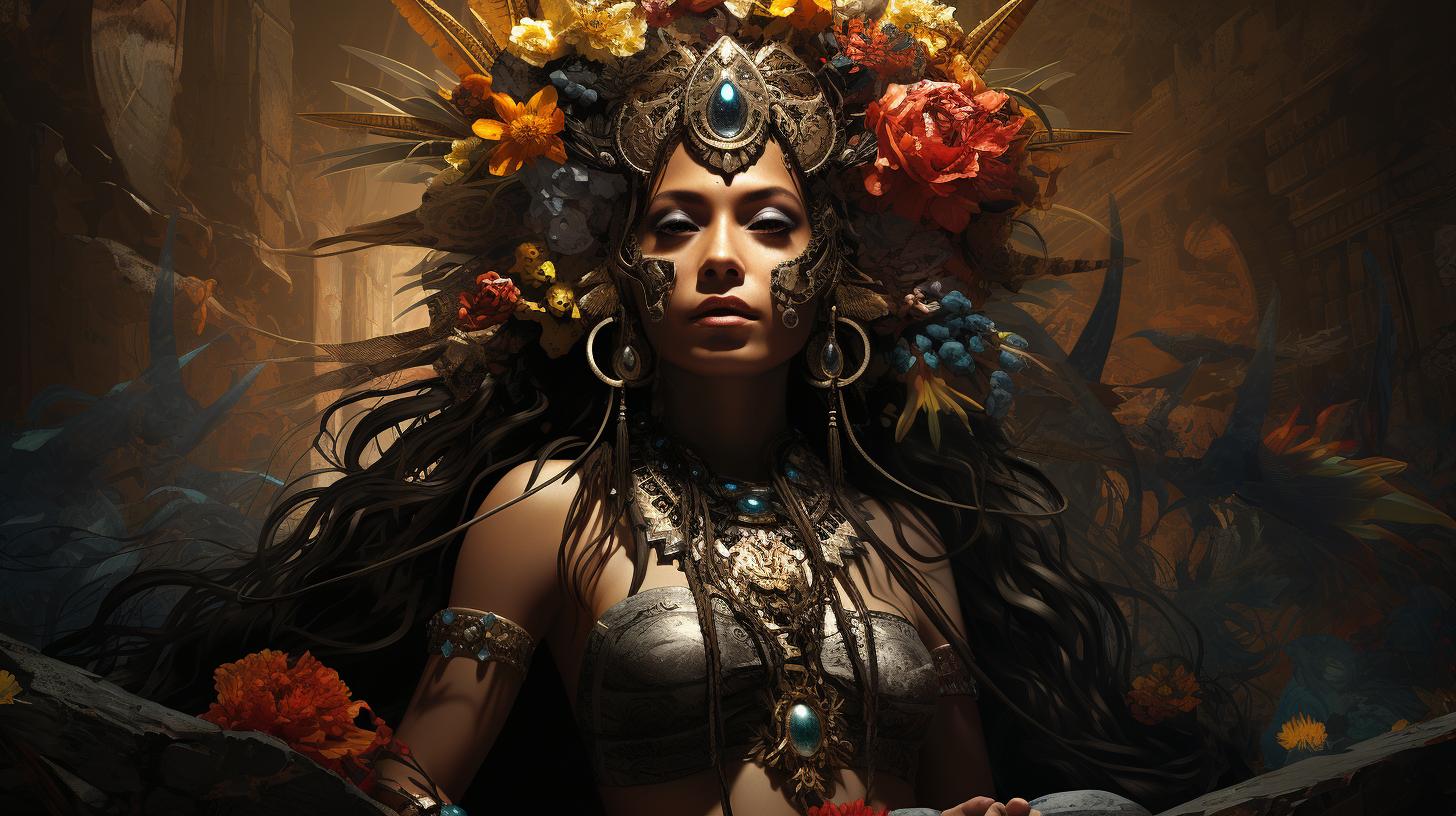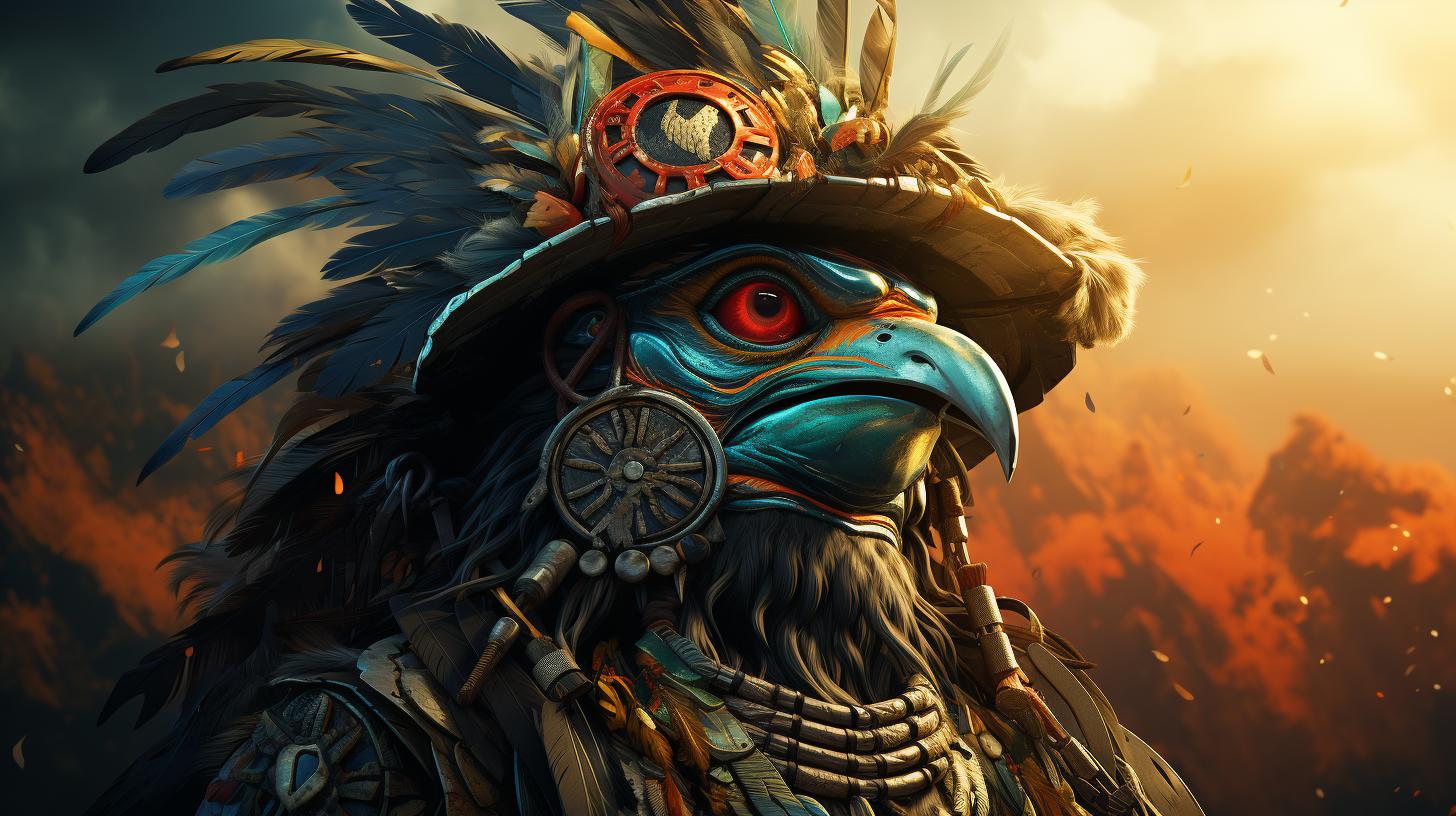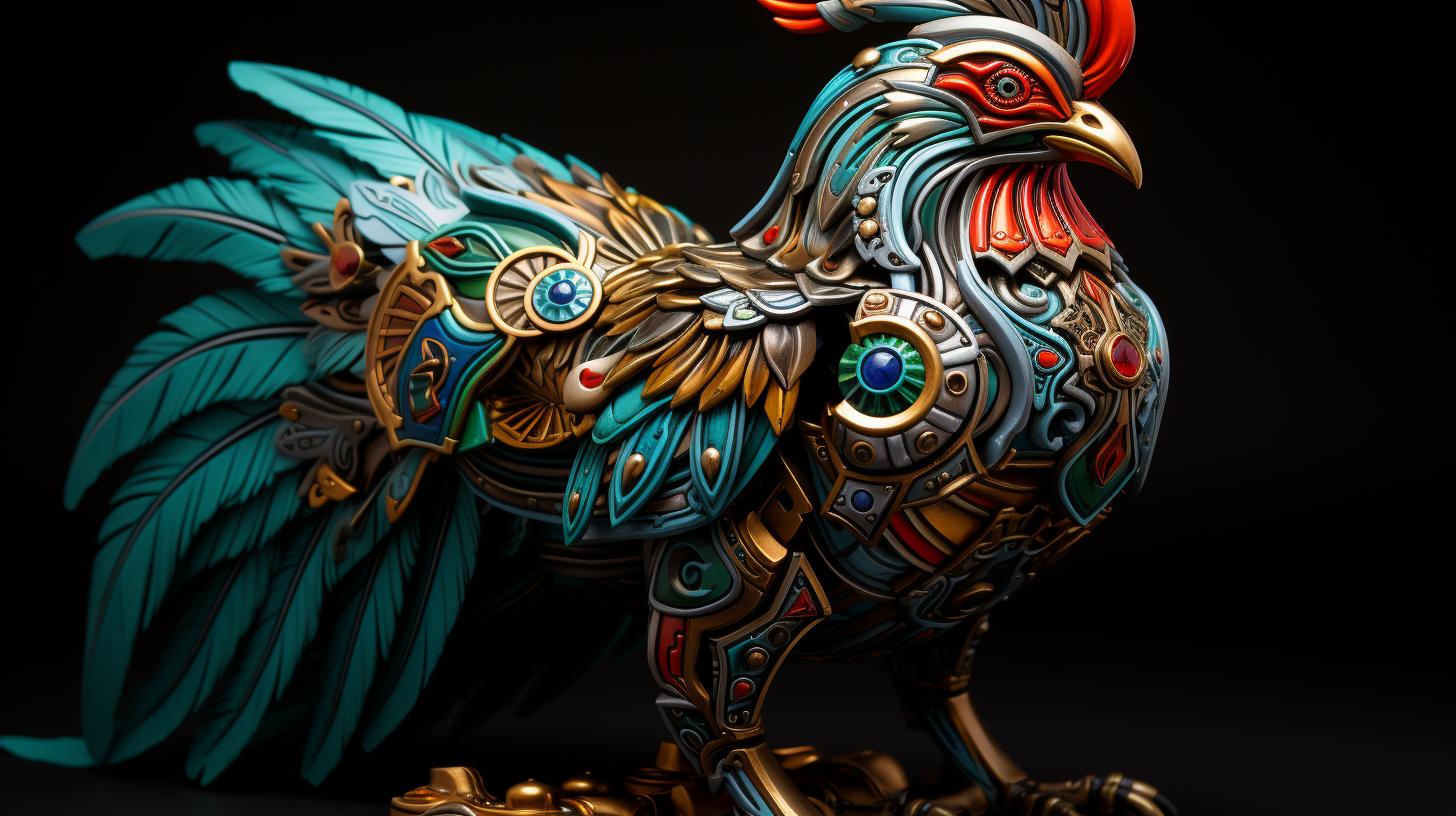Aztec Goddess Mictecacihuatl: Unveiling the Ancient Deity’s Mysteries
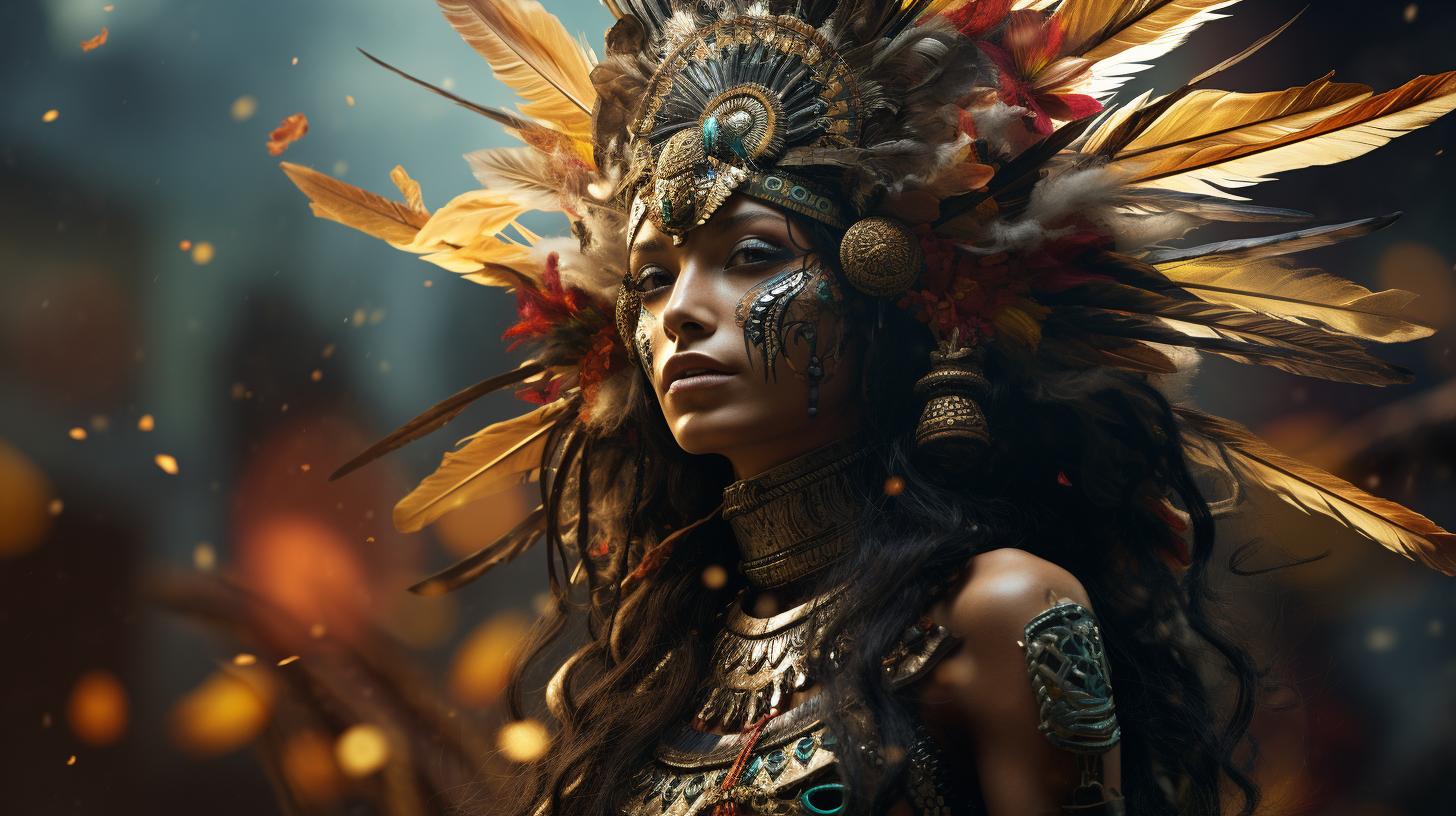
The Aztec goddess Mictecacihuatl, a central figure in ancient Mesoamerican mythology, holds a vital role in the realm of the dead. As a revered deity, she oversaw the care of the deceased’s bones and presided over festivals in their honor.
Over time, these traditions melded with Spanish Catholic customs, giving birth to the vibrant celebration known as Día de los Muertos, observed from October 31st to November 2nd. This article delves into Mictecacihuatl’s origins, her representation as a skeletal figure, and the evolution of her worship, shedding light on the fascinating Aztec cultural practices and their contemporary manifestations in Mexico.
Aztec Goddess Mictecacihuatl: Exploring the Ancient Deity
Welcome to the exploration of the enigmatic Aztec goddess Mictecacihuatl. Delving into the depths of Aztec mythology, we uncover the origins and significance surrounding this ancient deity. From her role in the underworld to the beliefs and traditions associated with her worship, Mictecacihuatl holds a position of profound reverence in Aztec culture.
Origins and Significance in Aztec Mythology
Mictecacihuatl’s origins trace back to the heart of Aztec mythology. Considered one of the central figures in their pantheon, she played a crucial role in the afterlife. Revered as the protector and caretaker of the bones of the deceased, her significance goes beyond mere symbolism.
She represented the cycle of life and death, ensuring the preservation of ancestral connections and the spiritual journey to the realms beyond.
Mictecacihuatl’s Role in the Underworld
Within the vast underworld of Aztec cosmology, Mictecacihuatl ruled alongside her husband, Miclantecuhtli, over the realm of the dead, known as Mictlán. As overseer of the bones, she meticulously safeguarded the remains and played a vital part in their journey to the afterlife.
Mictecacihuatl’s role extended beyond the physical realm, intertwining with their belief in the creation of new races through the collection and mixing of bones.
Beliefs and Traditions Surrounding Mictecacihuatl
The veneration of Mictecacihuatl was not confined to mythological tales but was deeply embedded within the beliefs and traditions of the Aztec people. She was honored through various rituals and festivals held in her honor, paying homage to the deceased and celebrating the interconnectedness of life and death.
These rich practices merged with the Catholic traditions brought by the Spanish conquistadors, ultimately evolving into the vibrant celebration known as Día de los Muertos.
The exploration of Aztec goddess Mictecacihuatl provides fascinating insights into the ancient beliefs and customs surrounding life and death. As we continue our journey, we unravel the evolution of her worship, the powerful symbolism behind her appearances, and the enduring cultural significance that transcends time.
The Evolution of Worship: From Aztec Mythology to Modern Culture
The Aztec goddess Mictecacihuatl, revered as the guardian of the dead, has undergone a remarkable evolution in worship over the centuries. The influence of Spanish conquest had a profound impact on Aztec beliefs, leading to a transformation in how Mictecacihuatl was venerated.
Influence of Spanish Conquest on Aztec Beliefs
The arrival of Spanish conquistadors in the 16th century marked a turning point in Aztec mythology. The introduction of Catholicism and the suppression of indigenous practices significantly influenced the perception and worship of deities like Mictecacihuatl.
The integration of Catholic rituals, symbols, and beliefs gradually merged with traditional Aztec practices, leading to a gradual transformation and syncretism of religious traditions.
Transformation into Santa Muerte: The Contemporary Veneration
As Aztec beliefs merged with Catholicism, it gave rise to the veneration of Santa Muerte, the contemporary embodiment of death in Mexican culture. Santa Muerte, often depicted as a skeletal figure similar to Mictecacihuatl, gained popularity in the late 20th century and continues to be worshipped openly today.
This transformation allowed believers to maintain their connection to the ancient Aztec goddess while adapting to the changing religious landscape.
Comparisons and Contrasts: Aztec Goddess Mictecacihuatl and Santa Muerte
Though Mictecacihuatl and Santa Muerte share similarities as cultural personifications of death, there are distinct differences between them. Mictecacihuatl was primarily associated with the Aztec underworld and the care of bones, while Santa Muerte embodies death in general and is worshipped for various reasons, including protection, healing, and justice.
While both deities reflect the enduring fascination with death in Mexican culture, the transition from Mictecacihuatl to Santa Muerte represents a shift in religious practices and symbolism over time.
Through the centuries, the worship of the Aztec goddess Mictecacihuatl has transformed and adapted, incorporating elements of Spanish Catholicism and evolving into the veneration of Santa Muerte in modern Mexico.
This evolution reflects the resilience and cultural integration of religious beliefs, capturing the dynamic nature of faith and its enduring connection to the rich Aztec legacy.
The Representations of Mictecacihuatl: The Face of Death
The goddess Mictecacihuatl, revered by the Aztecs, was depicted in various forms in their art and symbolism. Her representations held deep cultural significance, reflecting the beliefs and interpretations surrounding her role as the embodiment of death.
Depictions in Aztec Art and Symbols
Aztec art vividly portrayed Mictecacihuatl in various forms, often emphasizing her skeletal features and unearthly appearance. She was frequently depicted with a skull-like face, emphasizing the macabre nature of her role as the goddess of death.
These artistic representations showcased the Aztec’s fascination with mortality and their acknowledgment of the inevitability of death.
Physical Attributes and Symbolism of Mictecacihuatl
Mictecacihuatl’s physical attributes carried profound symbolism. Her desollada (flayed) skin represented the impermanence and decay of mortal existence, while her open mandible symbolized the welcoming of souls into the afterlife. The snakes adorning her skirt were a representation of rebirth and regeneration, alluding to the continuous cycle of life and death.
Cultural Significance and Interpretations of Mictecacihuatl’s Appearance
Mictecacihuatl’s appearance and symbolism held cultural significance within the Aztec society. Her skeletal form served as a reminder of the transient nature of life and the inevitability of death. Her role as a guardian of the bones of the deceased emphasized the Aztec belief in the connection between the physical remains and the eternal souls.
The representation of Mictecacihuatl played a crucial role in shaping Aztec attitudes towards mortality and the afterlife.
Explore more about the Aztec goddess Mictecacihuatl in the entire article.
The Festival of the Dead: Día de los Muertos
The Festival of the Dead, known as Día de los Muertos, is a cherished and vibrant celebration deeply rooted in Mexican culture. This annual event, observed from October 31st to November 2nd, honors and remembers the deceased.
It is a time when family and friends come together to commemorate loved ones who have passed away.
Origins and Evolution of the Celebration
The origins of Día de los Muertos can be traced back to the indigenous Aztec civilization, where it was initially celebrated during the ninth month of the Aztec calendar. This tradition of honoring the dead predates the arrival of Spanish conquistadors in Mexico.
With the influence of Spanish colonization and the introduction of Catholicism, the original Aztec beliefs merged with Catholic practices, giving rise to the modern-day Día de los Muertos. The commemoration became intertwined with the Catholic holidays of All Saints’ Day and All Souls’ Day, which occur on November 1st and 2nd respectively.
Rituals, Traditions, and Symbolism of Día de los Muertos
Día de los Muertos is a vivid and joyous affair, filled with numerous customs and rituals. One of the most recognizable symbols is the creation of altars, or ofrendas, which are elaborately decorated with marigold flowers, photographs, favorite foods, and mementos of the departed loved ones.
These ofrendas serve as a welcoming space for the spiritual return of the deceased.
The festival also involves the use of calacas and calaveras, which are intricately decorated skulls and skeletons. These playful representations are seen in various forms such as sugar skulls, as well as in vibrant artwork and costumes.
They serve as a reminder that death is an inevitable part of life and should not be feared.
Another integral aspect of the celebration is the cleaning and decorating of gravesites. Families gather to tidy the resting places of their loved ones, placing fresh flowers, candles, and incense to honor their memory.
Connection between Mictecacihuatl and the Modern Day Observance
Mictecacihuatl, the Aztec goddess of the underworld, remains intrinsically connected to the modern-day observance of Día de los Muertos. She was believed to preside over the festival, ensuring that the deceased were properly honored and cared for in the afterlife.
Although the worship of Mictecacihuatl has transformed over time, her legacy can still be seen through the enduring customs and symbolism of Día de los Muertos. From the veneration of ancestors to the visual representations of skulls and skeletons, her presence continues to permeate this rich and vibrant celebration of life and death.
The Festival of the Dead, Día de los Muertos, is a time of deep cultural significance in Mexico, where the memories of loved ones are honored, and the beauty of life and death are celebrated with joy and remembrance.
Mictecacihuatl and Miclantecuhtli: Guardians of the Bones
Within Aztec mythology, Mictecacihuatl and her husband Miclantecuhtli held crucial roles as guardians of the bones in the realm of the dead. These deities played an integral part in the creation mythology, where they were responsible for gathering and recycling the bones to construct new races.
Roles of Mictecacihuatl and Miclantecuhtli in Creation Mythology
In Aztec belief, Mictecacihuatl and Miclantecuhtli were entrusted with the task of collecting the bones of the deceased. These sacred bones were then provided to other gods who utilized them in the process of crafting new races.
The existence of diverse races was attributed to the mixing and repurposing of these collected bones, symbolizing the interconnectedness and continuous cycle of life and death.
Gathering and Recycling of Bones in Aztec Beliefs
A fundamental aspect of Mictecacihuatl and Miclantecuhtli’s divine duties was the gathering of bones. They ensured that no bone was left unaccounted for, meticulously collecting them to be used in the creation of new life forms.
This act of gathering served as a metaphorical representation of the importance placed on the preservation and continuity of existence within Aztec beliefs.
Understanding the Cosmic Connection: Bones as Building Blocks
Within Aztec cosmology, bones held a profound significance as the fundamental building blocks of life. The collection and repurposing of bones by Mictecacihuatl and Miclantecuhtli exemplified the understanding that the cycle of life and death forms an essential part of the cosmic order.
This concept underscored the interconnectedness between the earthly realm and the spiritual realm, emphasizing the transformative power of death in the cycle of rebirth.
In conclusion, Mictecacihuatl and Miclantecuhtli played pivotal roles as guardians of the bones in Aztec mythology. They were responsible for collecting and recycling the bones to create new races, symbolizing the cyclical nature of life and death.
This profound belief in the cosmic significance of bones reflected the interconnectedness of the earthly and spiritual realms in Aztec cosmology.
Mictecacihuatl in Contemporary Art and Popular Culture
Influence on Mexican and International Art
Mictecacihuatl, the Aztec goddess of the underworld, has left an indelible mark on Mexican art. Her striking skeletal figure, with a jaw wide open and a skirt made of serpents, has been depicted in various mediums, from ancient murals to modern paintings and sculptures.
Mexican artists often incorporate her image to explore themes of death, spirituality, and cultural identity. Additionally, her iconic representation has gained recognition on an international scale, inspiring artists outside of Mexico to incorporate her imagery into their work.
Mictecacihuatl’s Presence in Literature, Film, and Music
The influence of Mictecacihuatl extends beyond visual art and permeates the realms of literature, film, and music. In literature, she is often portrayed as a powerful and enigmatic figure, symbolizing both death and rebirth.
Many novels and poems explore her role in Aztec mythology and its implications in modern times. In the world of film, Mictecacihuatl’s captivating persona has been featured in movies, documentaries, and animated films, bringing her ancient myth to life on the silver screen.
Additionally, musicians draw inspiration from her rich symbolism, incorporating her name and imagery into their lyrics, compositions, and album artwork.
Impact on the Perception of Death and Mexican Identity in Popular Culture
Mictecacihuatl’s presence in popular culture has significantly impacted the perception of death and the Mexican identity. Through art, literature, and various forms of media, her representation has helped shape a unique perspective on mortality, portraying death not as something to be feared, but as an inherent part of life’s cycle.
This perspective has contributed to the distinct Mexican cultural identity, as Día de los Muertos and its symbols, including Mictecacihuatl, have become synonymous with Mexican traditions and values. The ubiquitous presence of Mictecacihuatl in contemporary art and popular culture acts as a reminder of the interconnectedness of life and death, fostering a sense of cultural pride and celebration of ancestral heritage.
- Artists across Mexico and beyond are influenced by Mictecacihuatl’s imagery in their creative endeavors.
- Literature, film, and music incorporate Mictecacihuatl’s mythology to explore themes of death, rebirth, and cultural identity.
- Mictecacihuatl’s representation has influenced the perception of death, shaping a unique perspective that celebrates and embraces mortality.
- This influence has contributed to the development of a distinct Mexican identity centered around the celebration of Día de los Muertos and its symbols.
.
..











